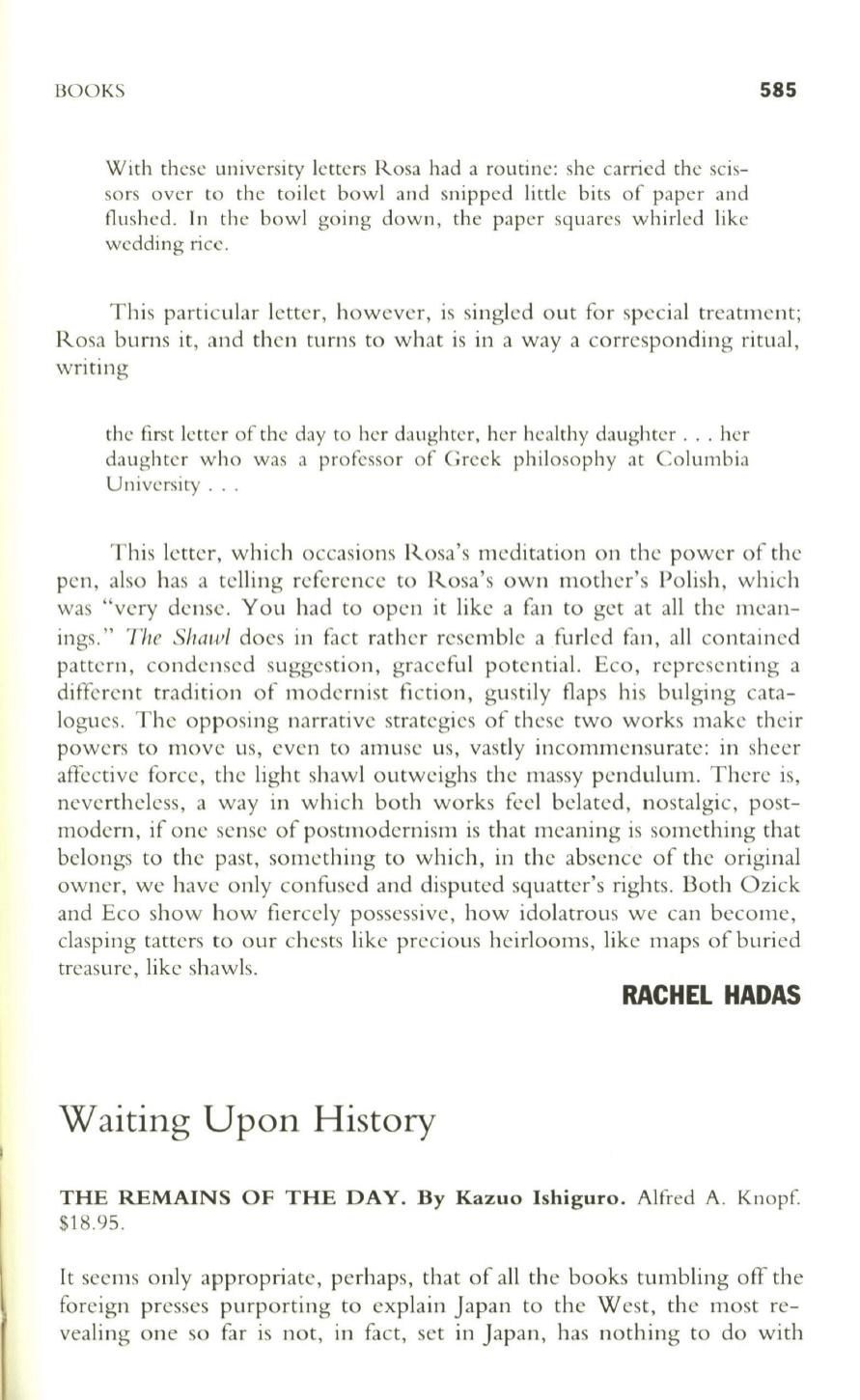
BOOKS
With these university letters Rosa had a routine: she carried the scis–
sors over to the toilet bowl and snipped little bits of paper and
flushed. In the bowl going down, the paper squares whirled like
wedding rice.
585
This particular letter, however, is singled out for special treatment;
Rosa burns it, and then turns to what is in a way a corresponding ritual,
writing
the first letter of the day to her daughter, her healthy daughter ... her
daughter who was a professor of Greek philosophy at Columbia
University ...
This letter, which occasions Rosa's meditation on the power of the
pen, also has a telling reference to Rosa's own mother's Polish, which
was "very dense. You had to open it like a fan to get at all the mean–
ings."
The Shawl
does in fact rather resemble a furled fan, all contained
pattern, condensed suggestion, graceful potential. Eco, representing a
different tradition of modernist fiction, gustily flaps his bulging cata–
logues. The opposing narrative strategies of these two works make their
powers to move us, even to amuse us, vastly incommensurate: in sheer
affective force, the light shawl outweighs the massy pendulum. There is,
nevertheless, a way in which both works feel belated, nostalgic, post–
modern, if one sense of postmodernism is that meaning is something that
belongs to the past, something to which, in the absence of the original
owner, we have only confused and disputed squatter's rights. Both Ozick
and Eco show how fiercely possessive, how idolatrous we can become,
clasping tatters to our chests like precious heirlooms, like maps of buried
treasure, like shawls.
RACHEL HADAS
Waiting U pon History
THE
REMAINS
OF THE
DAY.
By
Kazuo Ishiguro.
Alfred A. Knopf.
$18 .95.
It seems only appropriate, perhaps, that of all the books tumbling off the
foreign presses purporting to explain Japan to the West, the most re–
vealing one so far is not, in fact, set in Japan, has nothing to do with


